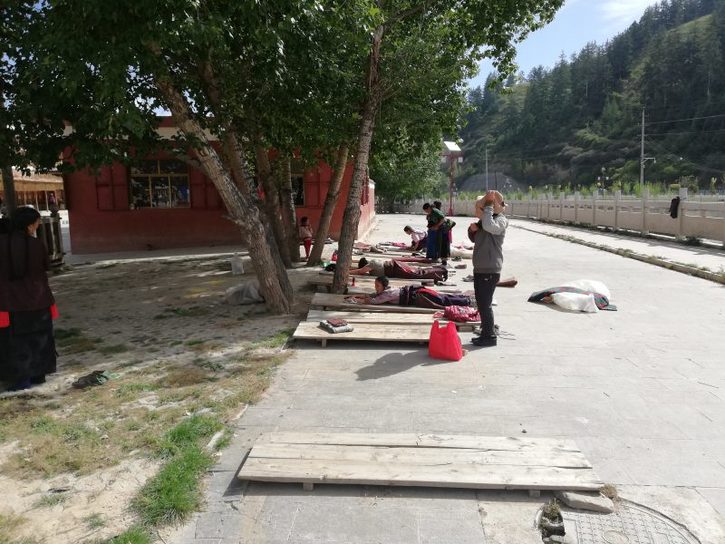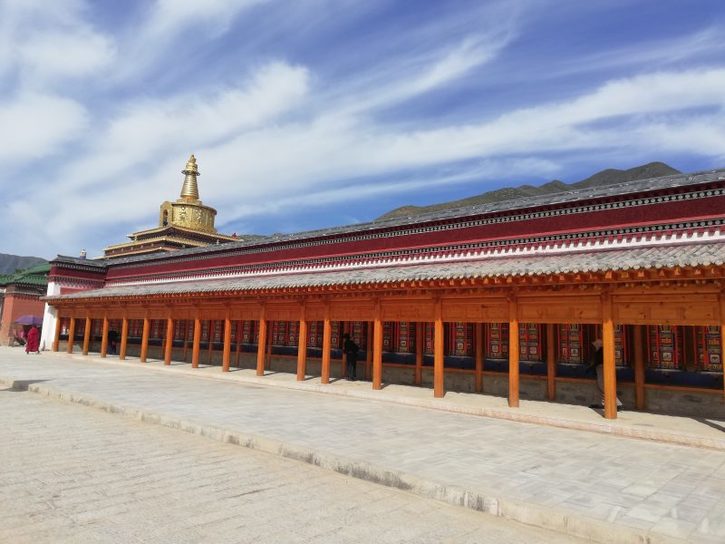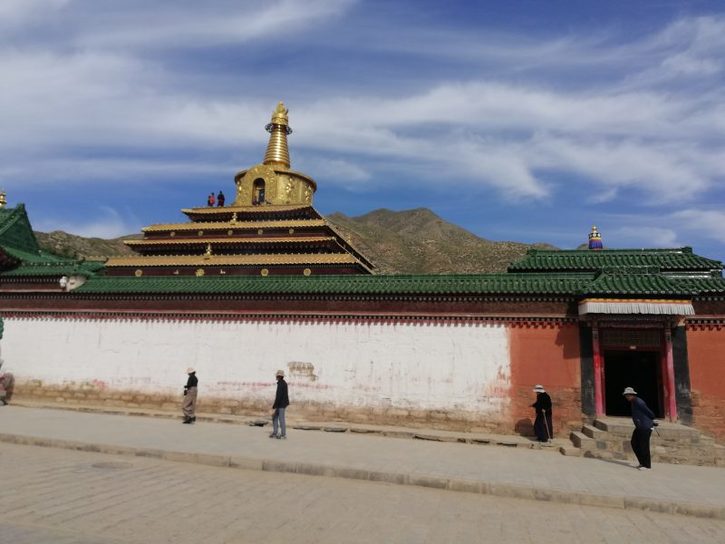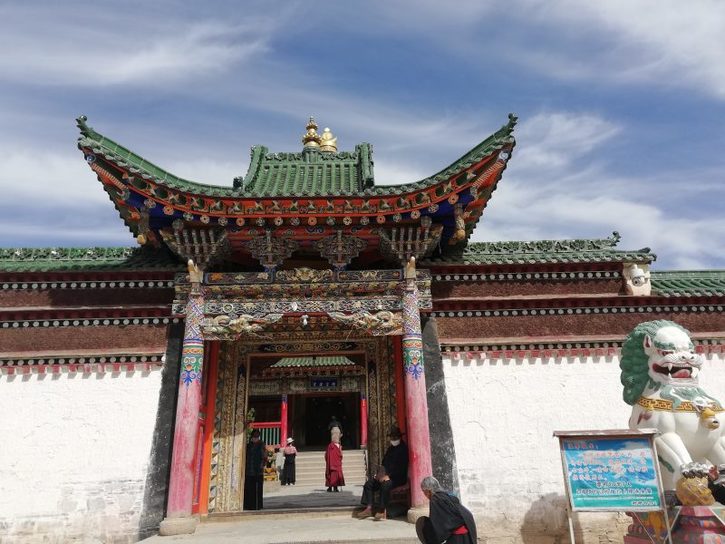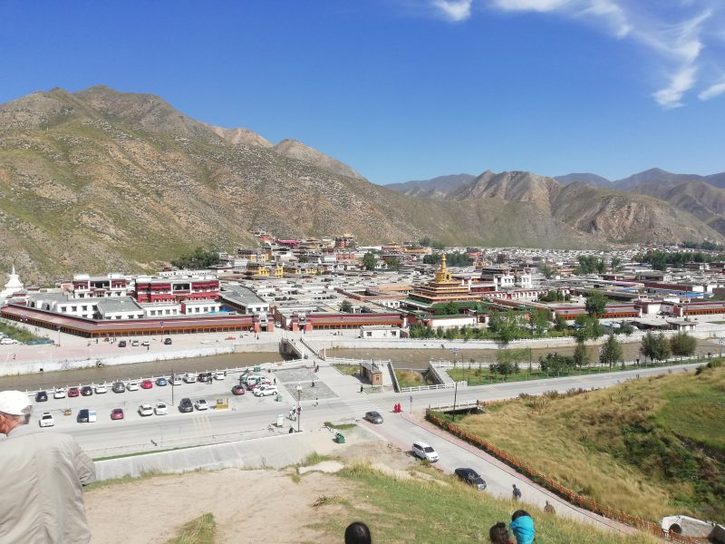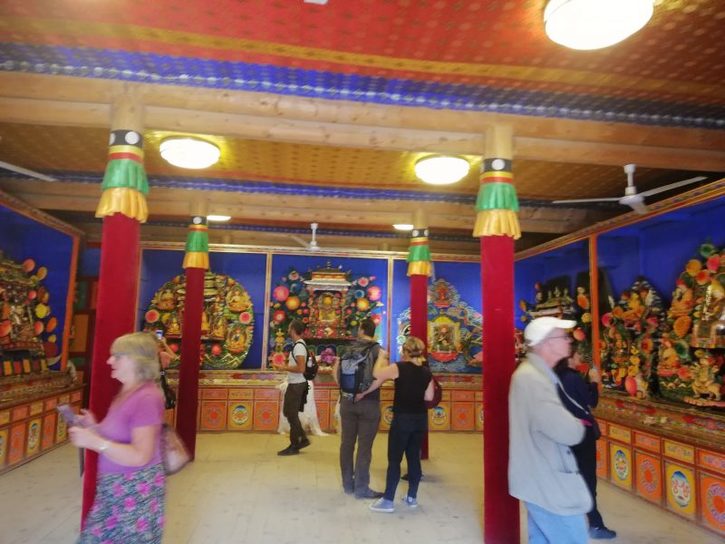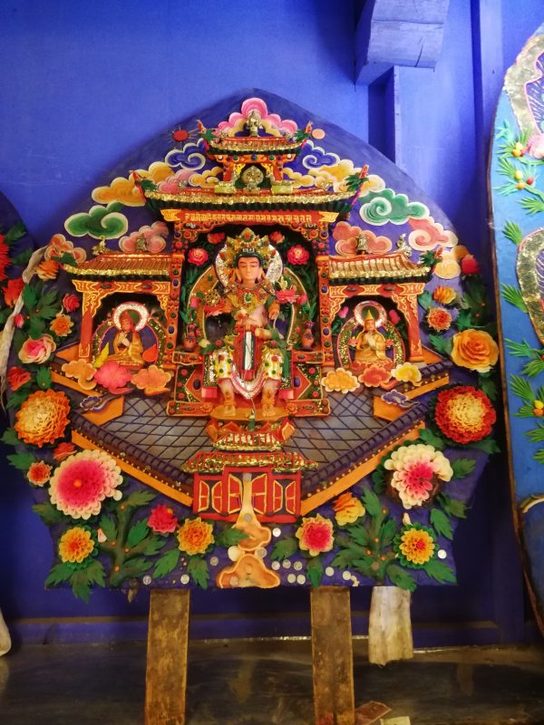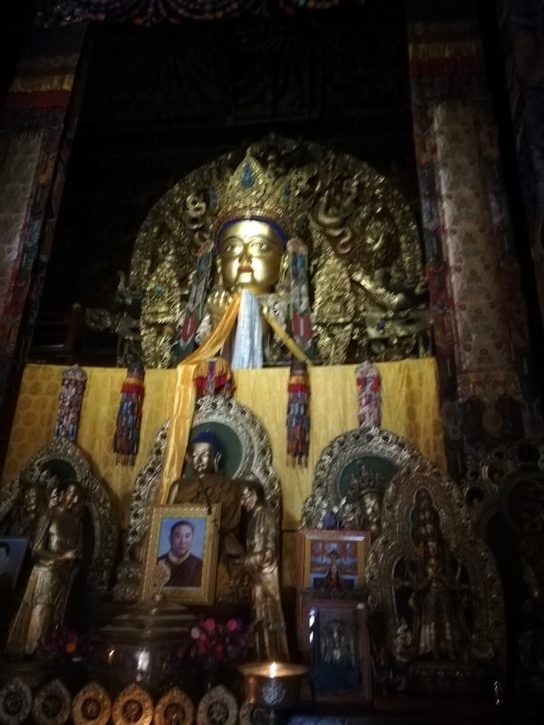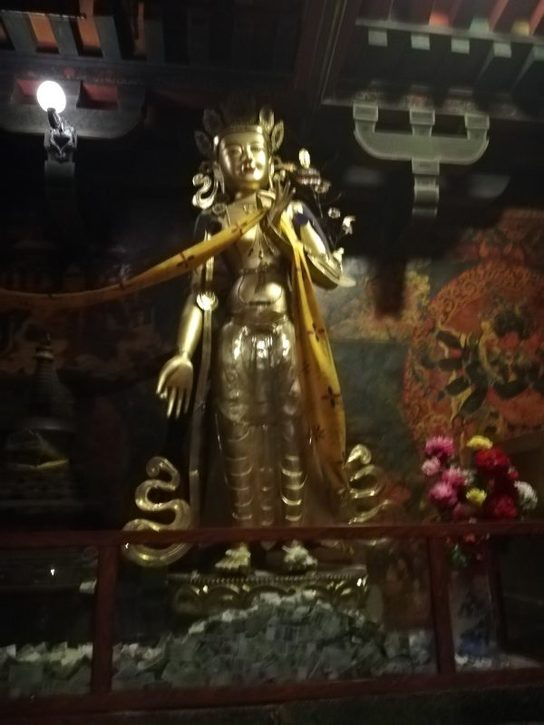We got up too late for the 10.00 am guided tour of the Labrang monastery so booked for the 3 pm one. OAPs are free! Green took us up a hill to get a panoramic view of the monastery, and I spent the rest of the day until 14.30 doing the blog. At 2,920 metres ASL, Xiahe is cold at night but warms up somewhat in the daytime. The population is 40% Han and 10% Hui, living together in the eastern part of the town, and 50% Tibetan living in the scruffier western part, with the monastery dividing the two halves.
Labrang is one of six major monsteries of the Gelugpa sect (Yellow Hats), the others being Drepung, Sera and Ganden at Lhasa, Tashilumpo at Shigatse and Kumbum which we have seen. It is far less crowded than Kumbum because it does not have the historical significance. However it is one of the main centres of Buddhist education in China and was founded in 1709 by Nagong Tsunde, the first-generation Jamyang (a line of reincarnated Rinpoches or living Buddhas ranking third in importance after the Dalai and Panchen Lamas). There were 4,000 monks at its peak and about 1,800 now; we met them constantly in the street and in the off-licence where they were stocking up with booze. Nearly all of them were unhealthily fat, so it can’t be a bad life.
There are lots of prayer wheels with pilgrims turning them, vultures circling overhead on the lookout for the next (sky-burial) meal of delicious human intestines and the sound of chanting by monks when prayers are taking place. The 05.00 am prayers attract only 10-15 monks for some reason while the 11.00 am prayers attract over 1,000.
There are six colleges teaching esoteric Buddhism, theology, astrology, law and medicine. We were taken to the latter by our guide, a young, very cheerful and only moderately fat monk who convinced us that monks learn to heal people by prayer. We also visited the Manjushri Temple, the Serkung (Golden Temple), the Grand Sutra Hall (main prayer hall) and a museum of gifts and relics with some enormous elephant tusks from Thailand and some yak-butter sculptures. They are all illuminated by yak-butter lamps and contain statues of the Buddha in various sizes. We had a beautiful Tibetan meal and I chose the yak meat until I was told it was raw, so chose some yak-meat mince and rice washed down with cups of yak-milk tea. Tibetan menus are not too varied. We spent another night at the Ping-an hostel with a torrential rainstorm at night which caused a power cut.
